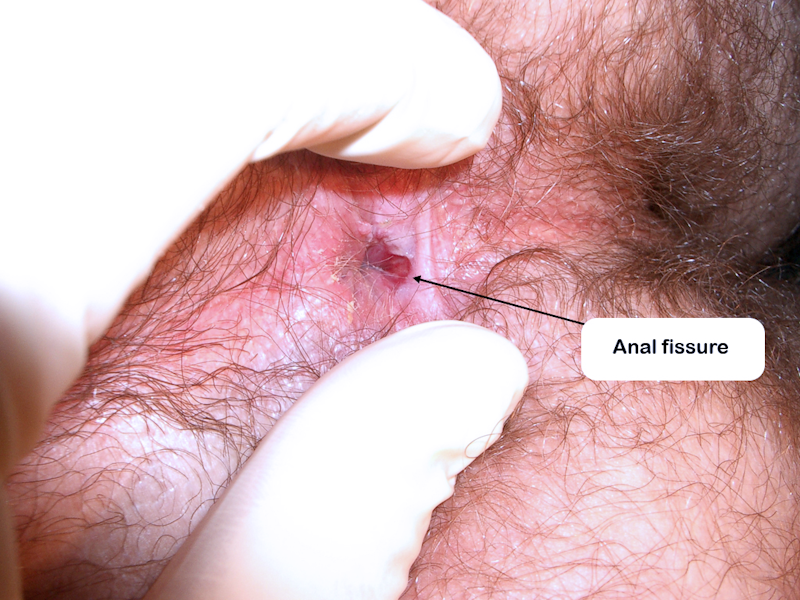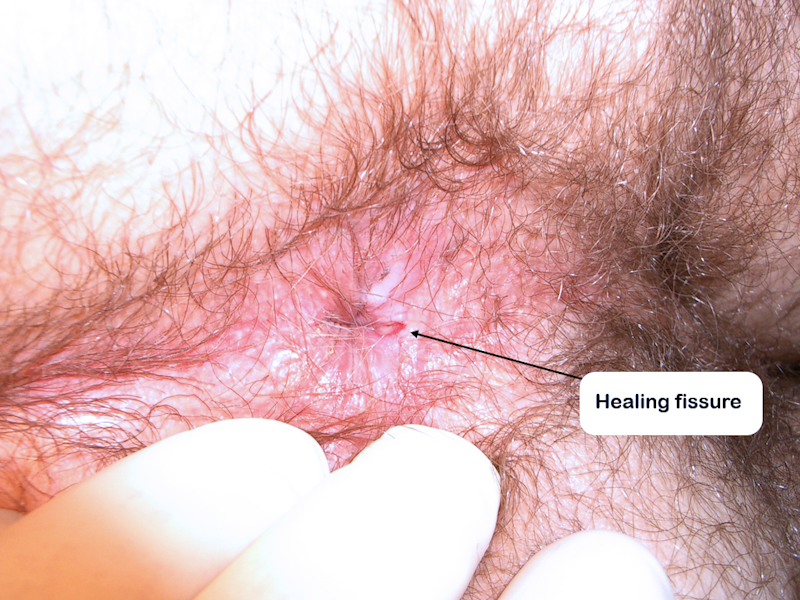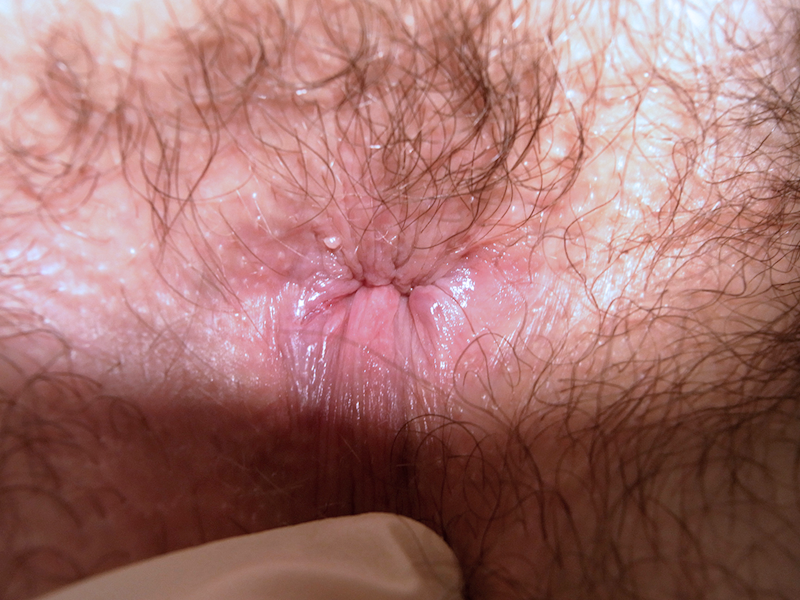What is it?
An anal fissure is a tear in the skin of the anal canal or perianal area which most commonly occurs in the posterior midline.
The majority of anal fissures are caused by local trauma to the anal canal, such as passage of hard stool or anal sex.
Anal fissures are often superficial, however with deep anal fissures, the exposed internal sphincter goes into spasm causing severe pain and leading to delayed healing. Subsequent bowel motions cause further pain and bleeding.
Patients may describe a tearing pain with the passage of bowel movements. The passage of stool may be accompanied by bright rectal blood, usually limited to a small amount on the toilet paper or on the surface of stool.
Clinical presentation
An acute fissure appears as a laceration best seen by stretching the perianal skin.
Look initially at the posterior midline. A chronic fissure has raised edges exposing the white, horizontally oriented fibres of the internal anal sphincter at its base.
Chronic fissures are often accompanied by external skin tags at the distal end.
Recurrent or non-healing fissures despite medical therapy should raise concern about other inflammatory conditions such as Crohn's disease, infections such as primary syphilis or anal cancer.
Warning
May contain graphic images of human anatomy, medical conditions and medical procedures. Viewing discretion is advised.
Anal fissures at various stages
Management
- Encourage the patient to avoid straining.
- Stool softeners (such as Metamucil®, docusate sodium) may help by keeping the bowel actions soft.
- Topical glyceryl trinitrate ointment (such as rectogesic) helps to relax the anal sphincter muscles and improves blood flow to the mucosa to speed up the healing of the fissure. Warn patients to ensure they wash their hands after application of the ointment and of the side effect of a throbbing headache or dizziness (due to orthostatic hypotension).
- If severe and not responding to the treatment, consider referral to a colorectal surgeon for botox injection (~70% success rate) or anal sphincterotomy (day procedure, ~98% success rate but 5% may have altered flatus control).



